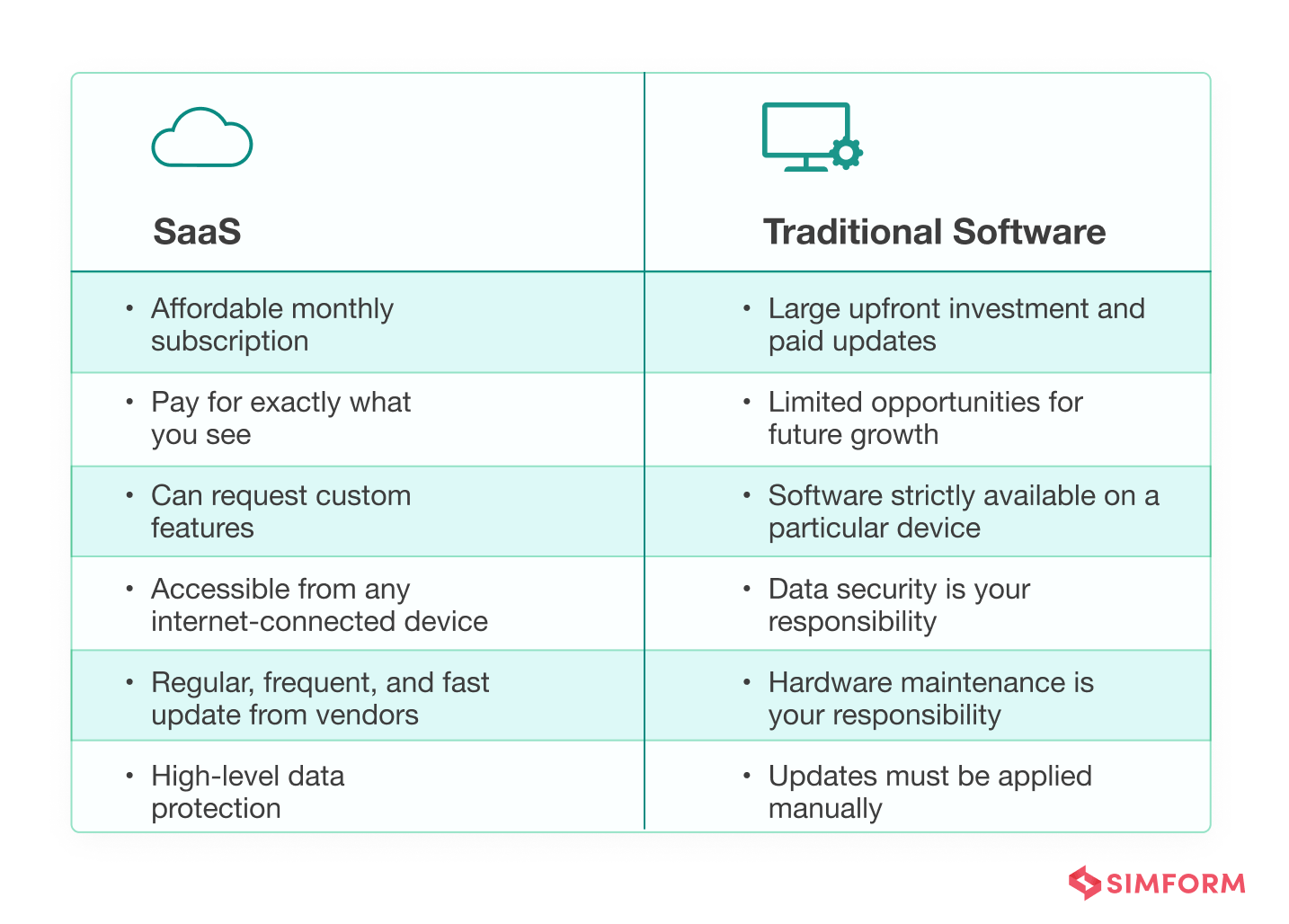Software-as-a-Service (SaaS) platforms have transformed how businesses operate. These cloud-based solutions have become essential tools for organizations of all sizes looking to streamline operations, reduce costs, and boost scalability. Let's explore in detail how SaaS applications help companies save time and money, with real-world examples and insights from industry leaders.
1. The Cost Efficiency of SaaS
SaaS platforms eliminate the need for heavy capital investment in infrastructure, such as servers and data centers. Companies no longer have to worry about purchasing hardware or hiring an in-house IT team to manage and maintain these systems. Instead, they can subscribe to a service, paying a predictable monthly or annual fee for only what they use. This pay-as-you-go model significantly reduces upfront costs and transforms fixed costs into variable ones, enabling businesses to scale efficiently.
For instance, Salesforce, one of the largest SaaS providers, allows businesses to access enterprise-level CRM tools without the massive infrastructure investment required by traditional software. This can save companies up to 70% in infrastructure and software-related costs.
Key Benefits:
- No upfront costs for hardware or infrastructure
- Subscription-based pricing reduces financial strain
- Reduced IT staffing needs and lower operational costs
Visual: SaaS vs Traditional Software Costs

2. Time-Saving Features of SaaS
SaaS platforms are built for rapid deployment and ease of use, meaning businesses can start using them almost immediately without long, complex implementation processes. Traditional software often requires months of installation, configuration, and employee training. In contrast, SaaS applications are ready to use in days or even hours, ensuring minimal downtime.
Additionally, SaaS applications handle software updates and maintenance automatically, without requiring input from the business. This constant availability of new features without disruptions allows businesses to remain competitive and up-to-date without allocating internal resources to manage upgrades.
A prime example is Slack, which quickly became a market leader in workplace communication. The company’s platform allowed businesses to scale their team communication needs without worrying about IT complexities or costly implementations.
Key Features:
- Fast deployment with minimal setup
- Automatic updates without disrupting workflow
- 24/7 customer support ensures continuous operation
3. Flexibility and Scalability with SaaS
Scalability is one of the most valuable advantages of SaaS. As companies grow, their software needs evolve. With SaaS, businesses can easily adjust their subscription to accommodate more users, more storage, or new functionalities. Unlike traditional on-premise solutions, which often require additional hardware purchases and complicated upgrades, SaaS applications allow companies to scale their usage on-demand without the need for substantial capital investment.
A company like Dropbox illustrates how SaaS can grow with a business. Initially serving small startups with affordable cloud storage options, Dropbox has scaled its offerings to meet the needs of massive enterprises, offering tailored solutions that grow alongside businesses’ data storage needs.
How SaaS Scales with Your Business:
- Easily scale up or down based on business needs
- Add new features or users without overhauling systems
- Adapt quickly to new market demands or business expansions
Visual: Scaling a Business with SaaS
[Insert graph showing the scalability of SaaS for businesses of different sizes]
4. Real-World Examples: How SaaS Drives Efficiency in Large Enterprises
Many large companies have already seen substantial time and cost savings by adopting SaaS solutions. For example, Netflix transitioned its entire infrastructure to the cloud using AWS (Amazon Web Services) and saved millions in operational and maintenance costs. This move allowed them to focus on core business growth, providing a platform for streaming content to millions globally without the need for physical servers or complex IT setups.
Another example comes from Adobe, which shifted its creative software offerings to a subscription-based model. By adopting SaaS for products like Photoshop and Adobe Illustrator, Adobe eliminated piracy concerns and reduced the burden of maintaining perpetual licenses. This shift helped Adobe increase its recurring revenue while offering customers greater flexibility.
Key Benefits in large enterprises:
- Seamless scalability allows businesses to adapt quickly
- Reduced operational complexity frees up resources for innovation
- Access to world-class infrastructure and security
5. The Bottom Line: Why Choose SaaS?
The transition to SaaS brings numerous advantages to businesses looking to cut costs, improve efficiency, and accelerate growth. By outsourcing infrastructure and focusing on subscription-based, on-demand services, companies can reduce both capital and operational expenditures. More importantly, they can leverage SaaS to remain agile and responsive to changes in the market, all while enjoying seamless updates and world-class support.
The SaaS model is not just about saving money — it’s about transforming business operations into more agile, cost-effective, and competitive systems. As companies continue to adopt these solutions, the question is no longer "why use SaaS?" but "how can we leverage it to improve performance and stay ahead?"
Contact Us for Customized SaaS Solutions
At Hypecode, we specialize in creating tailored SaaS solutions to meet your unique business needs. Whether you’re looking to migrate to the cloud or develop a custom SaaS platform, we’re here to help. Learn more about our custom software solutions here. Let’s connect and discuss how we can optimize your business operations with the right SaaS tools!
This blog content is more detailed, includes real-world examples from large companies, and provides a structure that engages the reader with clear, informative sections. You can insert graphs and visuals based on the examples mentioned to enhance the content further.
 Türkçe
Türkçe